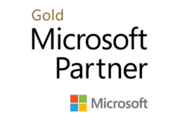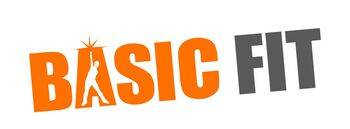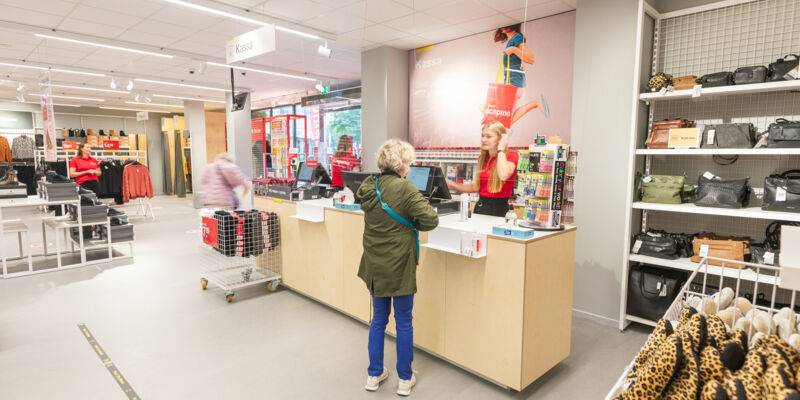Four years ago, the Blokker family decided to unbundle Blokker Holding. Store formulas such as Leen Bakker, Xenos and Intertoys went up for sale. That had major consequences for the IT landscape of Blokker Holding, which had two shared data centers. Several applications used by different formulas were running there. "The unbundling meant that from now on those formulas had to organize IT management themselves," says John de Keuning, IT director of the organization that runs the Blokker formula.
That raised questions. Blokker Holding still did a lot itself, such as network management, system management and data base management. Was that still desirable? "We decided to place those hard IT activities with an external IT service provider. This leaves us with an IT organization within Blokker that focuses more on direction rather than execution. An organization with the expertise needed to support the business with new systems and processes."
Strategic choice
Outsourcing is a strategic choice, De Keuning emphasizes. "Blokker is a retailer that sells items for the home, but not an IT service provider. The knowledge and quality needed in technical management should not be underestimated. That requires a lot of time and attention. On top of that, we would then have to compete with professional IT service providers for the scarce IT talent."
De Keuning's team no longer has to worry about technical management and can focus on supporting the business. This requires people who have knowledge of retail in addition to IT. People who know how to support the business even better with IT.
"Within Blokker Holding, the distance between the central IT department and the various formulas was quite large. Now we are much closer to the business and better understand what Blokker actually needs."
Knowledge of retail
Outsourcing was not easy because of the intertwining of all IT activities. Therefore, Blokker Holding initially decided to jointly outsource the two shared data centers including the associated equipment and technical management to one IT service provider. "We set up a tendering process in which two candidates finally remained," says De Keuning.
Make a difference with multicloud
Read moreThe choice fell on Simac. "Simac had been taking care of our store automation for quite some time. Within Blokker, we were very satisfied with that. We knew their approach and their willingness to think and move with us. That has a lot to do with culture."
Retail experience was another important argument for choosing Simac.
"Simac knows the retail sector, follows developments closely and knows what's going on. They understand what it takes to keep stores running and know where bottlenecks are likely to arise."
To invest or not to invest
After the outsourcing in January 2018, the unbundling followed first. For this, Simac hired IT employees from Blokker Holding. "They knew which applications were running in the data centers and had the knowledge about them. Partly because of that, Simac built up a lot of knowledge about the IT landscape in a short time."
Blokker then faced a new choice: to invest in new hardware or not? "Our equipment in the shared data centers was outdated. Something had to be done about that. Renewing the hardware would have involved an investment of several million. Moreover, we were now in a position to switch completely to a modern and much more flexible solution, a hybrid cloud."
Blokker asked Simac for a proposal for migration to the cloud. De Keuning: "We could of course have started another tender process, but given their knowledge of our IT landscape and our organization, it seemed better to ask what Simac could offer first. Of course we checked whether the costs were in line with the market. That remains an important criterion, as does flexibility in costs. That's where we came out with Simac."
Read all about Cloud|NEXT
Click herePublic and private cloud
Simac's proposal included a hybrid cloud environment: the public cloud of Microsoft Azure supplemented by Cloud|NEXT, Simac's private cloud. "We already had a number of applications running in Microsoft Azure. In addition, we are implementing Dynamics 365; Microsoft's ERP system. Migration to Azure makes integration with other applications a lot easier. We use the Azure Service Bus for this, a very modern integration layer to which Microsoft is constantly adding new technology and functionality. It is these cloud services in particular, especially those from Azure, that make the public cloud interesting."
Another advantage of the cloud concerns the ability to quickly scale up and down capacity:
"We pay by usage, which means that costs move with the need. And sometimes we need extra capacity temporarily, like now for testing the new ERP system. Then we only have to pay a little extra for a few weeks."
Legacy systems
Blokker has revamped almost its entire information landscape over the past three years by implementing new, preferably SaaS solutions. The remaining applications could not all be transferred to Azure.
For those applications,Cloud|NEXT was deployed. "We made a choice beforehand: what do we put in Azure and what in Cloud|NEXT? In the future, the balance will shift more and more to Azure," De Keuning expects. "Of course, all those solutions must then talk to each other. By using Azure's integration bus for that, we can switch faster, develop and innovate. And ultimately reduce the total cost of ownership, although in practice this is often difficult to demonstrate."
Tight deadline
The biggest challenge during the migration was the tight deadline. By July 1, all applications had to be migrated due to the expiration of contracts with the two shared data centers and several other software vendors. Exceeding the deadline would lead to a lot of additional costs.
"It was a conscious decision not to map out everything in detail beforehand. That would take a lot of time and we didn't have that. We mainly wanted to take a very pragmatic approach, but as a result we did run into unforeseen issues."
"For that, we had set up fall-back scenarios. After all, Blokker is on the air 24 hours a day. We have few processes that we can just shut down. We had to use these fall-back scenarios several times. As a result, that deadline did come very close at the end."
One point of contact
In the end, all problems were solved well, thanks in part to Simac's knowledge. De Keuning: "The problems were not so much about picking up and moving the applications, but the setup of the network in the hybrid cloud environment and the connection between those applications."
Even now that the migration is behind it, Blokker is still happy with the choice for a hybrid cloud environment managed by one party. Simac has its own Azure team and Cloud|NEXT team that are constantly working to expand the knowledge in their fields, but also collaborate with each other. "If there is a problem between an application in Azure and in Cloud|NEXT, Simac solves it."
Secure to the cloud with Microsoft Azure
Read moreInnovate
Currently, Blokker has almost no worries about the hybrid cloud environment. The De Keuning team now has all the time it needs to support the business. And the cloud helps with that. "For example, we introduced a new website and a new loyalty app. Naturally, we want customer data to be in one place and the customer to be able to log into the website and the app with one account. To do this, we use a service in Azure, which allows us to capture customer data and handle login procedures. Business intelligence and data analytics also run in Azure. The increasing availability of services in the cloud makes it easier to innovate."










